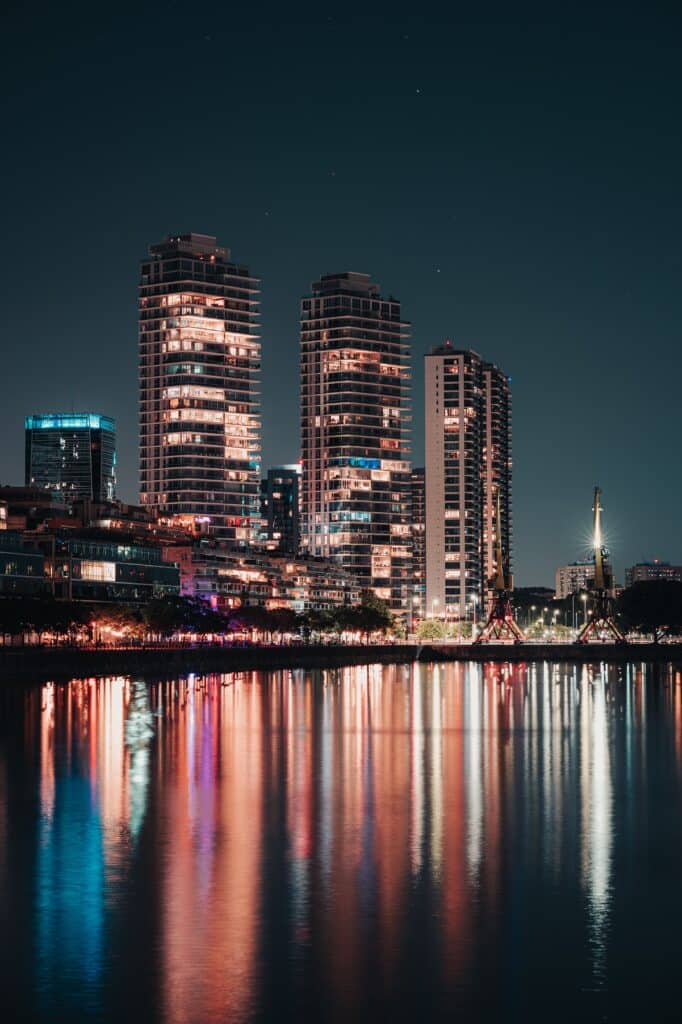In the realms of hydroponics and the thriving world of indoor gardening, an interesting question is lighting up the forums: Can one use common household LED bulbs as grow lights for plants? The answer to this illuminating conundrum is not quite as straightforward as one might think, and as this investigation by Humble Growth Hydroponics shows, there’s more to light than meets the eye.
Peeling back the layers of light and color, we uncover the role of color temperature and spectral wavelength in indoor gardening. Not forgetting the obstacles that stand in the way, like the lack of Photosynthetic Photon Flux Density (PPFD) and light diffusion, these factors may sound foreign but they hold a pivotal role in plant growth. The strength of the light and how it’s distributed can be the difference between a flourishing jungle and a wilted garden. For those exploring the world of plant nurturing and indoor garden creation, this insightful exploration can serve as an enlightening guide.

This image is property of i.ytimg.com.
Light color and spectrum
In the world of lighting and plant cultivation, one critical factor to consider is the color and spectrum of light. Light color and spectrum play a significant role in plant growth and photosynthesis, with different spectra eliciting different responses from plants.
Difference between full spectrum lights and household LED lights
Choosing between full spectrum lights and regular household LED lights is a question asked by many who dabble in indoor gardening. The key difference lies in the range of light that each type emits. Full spectrum lights span from ultraviolet to infrared wavelengths, mimicking the natural sunlight. On the other hand, the spectrum of light for regular LED bulbs is more restricted and doesn’t cover the full range of light spectrum.
Color temperature of household LED lights
In contrast to full spectrum lights, household LED lights measure their light spectrum in units of Kelvin, representing color temperature rather than frequency. The color temperature of an average household LED bulb is typically between light blue and orange, or cool and warm light. This temperature range is ideal for initiating plant growth but may not be as efficient as full spectrum lights for the entire lifecycle of plants, especially those that flower or bear fruits.
Can you get full spectrum household LED light bulbs?
As we delve deeper into the specifics, you might ask, “Is it possible to find full spectrum LED light bulbs meant for regular home use?” The answer is a resounding yes. There are LED bulbs available on the market that cover the full spectrum, specifically designed for growing plants indoors.
Power and photon density
Power and photon density, both critical for plant growth, are other essential factors to consider when choosing your light source.
Low photon density of household LED lights
Household LED lights generally fall short when it comes to photon density. While they are sufficient for basic plant survival and initiating growth, they don’t provide the robust light intensity many plants need to thrive.
Quality of diodes in household LED lights
The luminosity of an LED light is determined by the quality of its diodes. Unfortunately, the diodes in most household LED lights aren’t crafted for high output; instead, they’re designed to conserve energy, resulting in lower lighting power for your plants.
Light diffusion in household LED lights
Another aspect affecting the power of household LED lights is light diffusion. Household LEDs are designed to cast a soft, dispersed light, which unfortunately also reduces overall light intensity.
Using existing fixtures
If you’re considering using the existing LED lights in your home for indoor gardening, there are a few things you might want to know.
Using household LED lights you already have
Indeed, the lights you have at home can help your plants survive and may even initiate growth, especially for herbs and microgreens. This route is however, not recommended if you’re seeking optimal growth or want your plants to flower and bear fruit.
Optimized light bulbs for existing fixtures
For those not too keen on installing specialized grow lights or light strips, you can consider using optimized LED bulbs. These are specially designed to provide a full spectrum, yield a high photon density, and are compatible with your existing fixtures.
DIY LED grow light projects
Maybe you’re a hands-on person, and you relish the idea of creating your LED grow lights.
Introduction to DIY LED grow lights
Creating your DIY LED grow lights can be a fun and rewarding project. But beyond that, it could be an opportunity to tailor the light source to your plants’ needs meticulously.
The best DIY LED grow light projects
Countless DIY LED grow light projects are floating around online, ranging from simple setups to more intricate designs for larger grow spaces.
Step-by-step guide to building a DIY LED grow light
Building a DIY LED grow light involves several steps, beginning from planning your design, sourcing the required components, down to the assembly and testing.

This image is property of images.pexels.com.
Benefits of using grow lights
Grow lights have several advantages that far outweigh the use of regular LED lights.
The advantages of using grow lights over household LED lights
While household LED lights can foster basic plant growth, grow lights accelerate growth, cater to a plant’s entire lifecycle, increase yield, and stimulate flowering and fruiting.
Reasons why plants thrive better with grow lights
Plants thrive better under grow lights mainly because these lighting systems are designed to mimic natural sunlight, offering the full light spectrum, more power, and higher photon density, leading to more efficient photosynthesis.
Understanding the importance of proper lighting for plant growth
Just as water and nutrients, light is a basic requirement necessary for plant growth. From germination to photosynthesis and flowering, each stage of a plant’s life cycle demands specific light conditions that appropriate lighting can provide.
Optimizing plant growth
By choosing the right grow lights and using them responsibly, you can significantly optimize your indoor garden’s growth.
How to optimize plant growth with grow lights
Optimizing plant growth using grow lights involves perfecting specific factors – choosing the correct spectrum for the stages of growth, ensuring the right intensity, and tuning the duration of exposure.
Factors to consider when choosing grow lights
When choosing grow lights, consider the size of your grow area, the type of plants you’re growing, their light needs, the lifecycle stage they’re in, and your budget.
Tips for maximizing the benefits of grow lights
Maximizing the benefits of your grow light involves regular maintenance, adjusting the distance between the plants and the lights as needed, monitoring plant growth and health, and fine-tuning duration and intensity.

This image is property of images.pexels.com.
Different types of grow lights
There isn’t a one-size-fits-all grow light. Knowing the various types of grow lights available can help you choose the best one for your gardening goals.
Overview of different types of grow lights available
Types of grow lights include LED, Fluorescent, High-Intensity Discharge (HID), and many others, each with their unique set of benefits and conveniences.
Comparison of LED grow lights, fluorescent lights, and HID lights
While LED grow lights are energy-efficient and provide a tailored light spectrum, fluorescent lights are ideal for small, low-light plants, and HID lights are great for large spaces but consume a lot of energy.
Pros and cons of each type of grow light
Each type of grow light has its benefits and drawbacks. Knowing and weighing these can help you make an informed decision that suits your growing needs.
Choosing the right grow lights for your needs
Deciphering your plants’ needs and matching them to the appropriate light source is the key to a flourishing indoor garden.
Determining the specific lighting requirements for your plants
Knowing your plants, whether they are floral or foliar types, and understanding their light preferences are vital. This knowledge will guide you to determine the suitable color spectrum, intensity, and timing.
Factors to consider when selecting grow lights
When choosing grow lights, consider the plants’ light sensitivity, appropriate color spectrum, light intensity, your growing space’s size, and the life cycle stages of your plants.
Top recommendations for grow lights
Drawing up a list of top recommendations would be subjective, as it would depend on individual gardening goals and circumstances. However, focusing on grow lights that are adaptable, efficient, sturdy, and bear user-friendly features might be of help.

This image is property of images.pexels.com.
Tips for using grow lights effectively
To reap the best results from your grow lights, using them effectively is as crucial as selecting the correct one.
Setting up the right lighting schedule for your plants
Different types of plants require different amounts of light each day. Setting up a correct lighting schedule that fits your system and measuring it regularly would ensure efficient plant growth.
Properly positioning grow lights for optimal coverage
To ensure effective use of your grow lights, positioning them for optimal coverage is essential. The placement should bear in mind the plant types, their growth stages, and the size of your indoor garden space.
Monitoring and adjusting light intensity as needed
Continuous monitoring of plant growth and adjusting light intensity and duration as needed will ensure you’re providing the right amount of light while averting the risk of light stress or burn.
Conclusion
Factors to consider when deciding between household LED lights and grow lights
Deciding between household LEDs and grow lights depends primarily on your gardening goals and the type of plants you intend to grow. While household LEDs can foster germination and initial growth, grow lights are most effective for complete plant growth and cultivation.
Importance of investing in proper lighting for indoor gardening
Investing in the proper lighting for your indoor garden is as important as providing your plants with suitable soil and nutrients. The right light ensures active photosynthesis and plant growth, leading to better yields.
Making informed choices for successful plant growth with artificial lighting
Making informed choices about artificial light for your indoor garden is vital for successful plant cultivation. This requires understanding your plants’ light needs, the types of light solutions available, and how to use and adjust them effectively.
In this video, we aim to answer the question, “can regular led bulbs be used as grow lights?” Once again we delve into the subject of light color, focusing on color temperature instead of spectral wavelength. Plus, we also address all the factors that make this an intricate subject to crack, such as PPFD insufficiency and light diffusion. If you’re considering or simply have an interest in indoor gardening and are in the process of shopping for grow lights, you should definitely watch this video. It will be worth your while.
These are cost-effective (but not optimized, excellent for leafy or young plants, but perhaps unsuitable for fruiting plants due to power deficiency)
Full Spectrum High PPFD LED Grow bulb; a truly solid grow bulb with a pleasant light temperature and a (relatively) high PPFD at 12 inches.
We would like to share some lights that we adore and which hopefully will meet your needs.
These are all full spectrum.
Economical versatile led strip (which we use in our nursery)
Our favorite 1000 PPFD light (which we place above our Fogponic herb garden)
An excellent bargain 2×2 tent light (which we once used on our cloner and now place on our hydro wall)
Affordable strip lights that work admirably vertically (both tower gardens)
A high performance light strip that we plan to use in our Cannabis closet
An even higher performance light strip that we intend to use for our bush garden.


